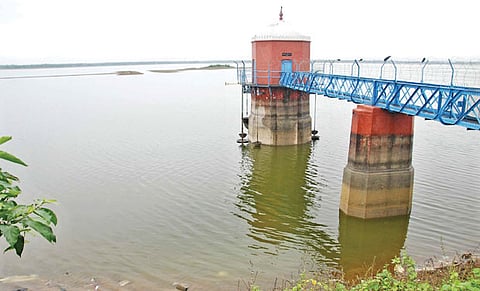Stubborn microplastics in water is Chennai’s trash: Researchers
Microplastics, which escape Metro water’s filtering system, could end up in drinking water at Chennai homes as these particles of less than 5mm have been found in considerable quantities at the Red Hills reservoir, one of the four that meet the city’s drinking water needs. Researchers found an average six pieces of plastic in every 1litre of water and an average 27 particles in every 1kg of sediment in the lake. These tiny pieces of plastics that are not visible to the naked eye mostly come from garbage and sewage let out from the nearby residential area into the lake and from fishing nets.
The study of water from the Red Hills reservoir — drinking water source for the city — found the lake had an average concentration of microplastics of 5.9n/m3 (0.6g/litre). The microplastics were mostly in the form of high density- polyethylene, low-density polyethylene, polypropylene, and polystyrene, which are all used for packaging meat, sweets and snacks, for plastic cutleries, toys, bottles and spare parts for the automotive industry. This points to garbage and untreated sewage dumped along the water body to be major source of pollutants.
Explaining there is little, a Metrowater official said people in the surrounding area let out their sewage into the lake, which is meant to store rainwater. “Every time we visit or receive complaints, we plug the sewage outlets, but the discharge continues,” the official added.
Researcher Kalpana Gopinath of Institute for Ocean Management, Anna University, who conducted the study that showed presence of microplastics in Red Hills reservoir, says the team study water in other city reservoirs for the presence of plastics.
“Definitely, the other city reservoirs could also have microplastics because of the densely populated areas surrounding these water bodies and the uncontrolled disposal of plastic waste by residents. We will be soon collecting samples in other reservoirs to study their concentration during rainfall season as well,” she said. “These results were from samples collected when there was less rainfall and not much water carried from upstream. It could have been a reason for less plastic. But there needs to be a study during heavy rainfall when the water carries a lot of pollution including plastic from the environment,” she added. The team collected six water samples and 32 sediment samples from an 18.21sqkm area.
The study also revealed heavy metals like iron, magnesium, calcium, sodium, silicon, titanium and potassium on the surface of the microplastics, which could have adsorbed them.
"Chennai residents use water directly or after boiling it, which does not remove the microplastics but increases the toxicity as boiling water could release the metals into the water,” one of the researchers said.
The concentration of microplastics in Red Hills Lake, however, is lower compared to many freshwater systems in other countries. Compared to an average 2.8grams per litre in the water and sediment samples in Red Hills, studies have shown the river networks in Shanghai had an average 88 particles in sediment sample, Ottawa River in Canada had 220 particles, Lake Erie in USA had 1,05,503 particles per sqkm in water sample and Thames River System, UK, had 1,398 particles in sediment samples.
“Every single particle of microplastic is harmful. We don’t have any proven technology to remove microparticles. Global research is underway. The challenge is management and disposal of microplastics after it is removed through filtration. Some say it could be used to lay roads, but they could leach into the groundwater after some time. Our studies have shown microplastics in groundwater as well,” Srinivasalu Seshachalam, director, Institute for Ocean Management, Anna University.

